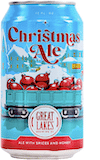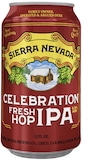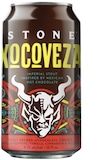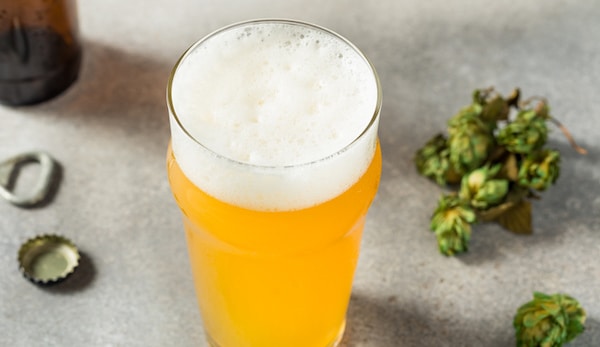
In This Article
- Introduction to Winter Beer Styles
- What Makes a Great Winter Beer?
- How Winter Beers Stack Up Against Other Seasonals
- Classic Winter Beer Styles
- How to Pair Winter Beers with Food
- 10 of the Best Winter Beers to Try
- Tips for Enjoying Winter Beers
- Wrapping Up: Celebrate Winter, One Pint at a Time
- Sign Up for Our Newsletter
Introduction to Winter Beer Styles
There are two feet of snow outside, and you just took out a second mortgage to pay for all the Christmas presents you bought. It might be time for a beer. Of all the seasons, winter has the most beers dedicated to it. There are holiday-themed beers where brewers hope to capture the spirit (and flavors) of Christmas in a glass. There are specialty barrel-aged stouts that are released at the start of winter. There are a number of beer styles that just feel right in the winter.
Wintery ales and lagers often share some characteristics; they tend to be richer, maltier, higher-ABV beers intended to feel comforting in a snowstorm or in the bitter cold. The “warming” effect of alcohol is most pronounced in these winter beers, and they’re brewed with darker malts for sweetness and often flavored with spices. But what makes a winter beer? And what styles and brands are best? Here’s everything you need to know about winter beers!
RELATED POSTS:
Summer Beer Styles: Our Top 10 Best Beers for Summer
Lowest Calorie IPAs: Best Tasting Beers Under 100 Calories
What Makes a Great Winter Beer?
A great winter beer typically leans into depth, richness, and warmth.
- Full-bodied mouthfeel: There’s something about cold weather that makes the body demand more sustenance, so it makes sense that beers brewed for the long winter be more filling.
- Higher alcohol content: Winter-themed beers tend to have a higher ABV than summery options. This can be attributed to the boozier option making the cold weather more tolerable.
- Malt-forward flavors: In order to higher ABV and heavier mouthfeel, more malts are needed in the mash. This also equates to roasty or sweet flavors.
- Complex flavor profiles: Roasted, chocolate, caramel, or spice notes are quite common in winter beers.
- “Dessert” characteristics: Aromas of dried fruit, coffee, toffee, or molasses are often present in stouts, porters, or Belgian ales.
How Winter Beers Stack Up Against Other Seasonals
| Trait | Summer Beers | Fall/Spring Beers | Winter Beers |
|---|---|---|---|
| ABV | 4–5% | 5–7% | 6–12% |
| Flavor | Light, crisp, citrusy | Floral, bitter, and piney | Malty, rich, warming |
| Color | Pale gold | Amber | Amber to black |
| Body | Light | Fuller | Full and creamy |
| Best Styles | Lager | IPA or Malty Lager | Stout, Belgian Ales |
Classic Winter Beer Styles
Stout and Imperial Stout
These beers are famous for their roasted malt flavors, with notes of chocolate and coffee, along with a creamy body. Higher ABV gives a warming effect and allows them to be aged. There is a wide range of stout varieties, like milk stout, oatmeal stout, and barrel-aged imperial stouts, all of which are perfect for winter.
Porter
Although they’re lighter than stouts, porters are still rich and creamy. They pair well with roasted meats and holiday desserts. Porters generally have an approachable ABV that makes them suitable for cozy afternoons at the pub, and they can also be used for cooking stews and meat dishes.
Winter Warmer / Strong Ale
Malt-driven beers with notes of toffee, caramel, or molasses are ideal for colder weather. These are often spiced with cinnamon, nutmeg, or clove and are very much “culinary” beers. This style is the traditional “Christmas beer” in Britain and the U.S. and will be released seasonally.
Barleywine
Strong, complex, and very boozy, English-style barleywines (and their barrel-aged American counterparts) are ideal for slowly sipping over the course of a few hours. With notes of dried fruit, toffee, sherry, and caramelized sugar, a glass of Barleywine can take the place of a dessert (or pair with one). You can buy one or two bottles and stash them in the cellar for next winter to see how they’ve aged.
Belgian Dubbel and Quadrupel
Dark Belgian ales are built for fireside sipping. Dubbels and Quads have fruity esters, spicy yeast characteristics, and warming ABVs reaching 10% and beyond. These are ideal for pairing with rich cheeses, chocolate, game meats, and stews.
Bock and Doppelbock
Germany may be known for their crisp lagers, but there are also a number of malt-forward lager styles like Bock with smooth caramel sweetness and roasty malts. Clean and cold fermentation aside, these beers have a flavor profile with rich, toasted malts and complex flavor profiles, more resembling ales.
Spiced or Specialty Ales
Breweries will traditionally release holiday beers that are spiced with vanilla, ginger, or cacao that encapsulate the holiday spirit. These will have ample Christmas or holiday branding, making them great for bringing to family functions or gatherings.
How to Pair Winter Beers with Food
| Beer Style | Flavor Profile | Ideal Pairing |
|---|---|---|
| Stout | Roasted, chocolatey | Beef stew, oysters, and chocolate cake |
| Barleywine | Sweet, boozy | Stilton cheese, caramel desserts |
| Belgian Dubbel | Fruity, spicy | Roasted duck, fruitcake |
| Bock | Malty, smooth | Pork roast, pretzels |
| Winter Warmer | Spiced, rich | Holiday ham, gingerbread |
10 of the Best Winter Beers to Try
Great Lakes – Christmas Ale

- Style: Winter Warmer | ABV: 7.5%
- Tasting Notes: Lovely holiday spices like ginger and nutmeg combine with rich fig and raisin flavors to evoke memories of Christmas cookies.
- Occasion: Holiday parties
Saint Bernardus – Christmas Ale

- Style: Belgian Quad | ABV: 10%
- Tasting Notes: A hint of tart citrus mingles with darker grape and berry flavors. There’s a lovely caramel base and lighter spice that makes this beer as complex and fascinating as any.
- Occasion: Sipping by the fire
Sierra Nevada Brewing – Celebration Fresh Hop IPA

- Style: American IPA | ABV: 6.8%
- Tasting Notes: For most hop-heads, Autumn is the best time of year as fresh-hop pale ales descend upon shelves and taplists. The best one? This traditional West Coast IPA showcases earthy hop bitterness with just the right amount of toasty malts.
- Occasion: Holiday parties or nights out at the bar.
Stone – Xocoveza

- Style: American Imperial Stout | ABV: 8.1%
- Tasting Notes: For someone who’d rather sip their dessert than eat it, this stout takes its inspiration from Mexican hot chocolate, so expect massive notes of cocoa, vanilla, cinnamon, and even some spicy peppers.
- Occasion: Sharing with your beer geek friends
Delirium Noel

- Style: Belgian Dark Strong Ale | ABV: 10%
- Tasting Notes: This ruby-hued ale brings hefty dark fruit aromas and a (not-so-subtle) bit of spice. It’s as pleasant to look at as it is to sip.
- Occasion: Intimate dinners
Goose Island – Bourbon County Stout

- Style: American Imperial Stout | ABV: 14%
- Tasting Notes: The OG barrel-aged stout brings gargantuan vanilla and bourbon notes that play off the coffee and chocolate of the malts. Expect a bit of heat from the booze, and drink this one slowly!
- Occasion: Watching the game or sipping throughout a longer movie.
Ayinger – Celebrator Doppelbock

- Style: Doppelbock | ABV: 6.7%
- Occasion: Biscuity sweetness and aromas of stone fruit, along with subtle bitterness reminiscent of rye bread.
- Tasting Notes: Pairing with hearty German food.
3 Floyds – Alpha Klaus

- Style: American Porter or Black IPA, depending on who you ask! | ABV: 6%
- Tasting Notes: This intensely hopped dark ale marries the grassy hop bitterness with lovely chocolate sweetness from the British malts.
- Occasion: Hanging with your friends or going to a bar.
Samuel Smith – Winter Welcome Ale

- Style: Winter Warmer | ABV: 6%
- Tasting Notes: Luxurious caramel and chocolate flavors from the malt mingle with fruity aromas.
- Occasion: Cozy afternoons at your local pub. Pairs well with British food!
Deschutes – Black Butte Porter

- Style: American Porter | ABV: 5.5%
- Tasting Notes: Black as night, this robust ale brings classic malt sweetness that’s balanced out by bitter coffee and cocoa flavors.
- Occasion: Campfire sipping or hanging out at a beer bar.
Tips for Enjoying Winter Beers
Use the correct glassware: Govlets, snifters, and tulip glasses will capture the malty sweetness and aromas of winter beers. The smaller serving size also suits the stronger ABV beers.
Serving temperature is key: Maltier, stronger ales like stouts and barleywines can be served at slightly warmer temperatures than lighter lagers or IPAs.
Pairing helps: These beers tend to pair well with desserts, cheeses, and hearty dishes that will keep you warm all winter long.
Old isn’t necessarily bad: Aging potential for high-ABV beers like stouts makes them the perfect style for winter.
Wrapping Up: Celebrate Winter, One Pint at a Time
Whether you’re sipping a Christmas ale with the family or drinking a bold barrel-aged stout by the fire, winter beers are the ideal way to take refuge from the cold. Have a favorite winter beer? Tag your winter pint pics on Instagram with @CraftBeerMeNow to let us know. Or shout it out in the comments! And if you want to brew your own, subscribe to the Craft Beer Me Newsletter for brewing tips and other helpful information.
Sign Up for Our Newsletter
📩 Get brewing tips, beer reviews, and new articles delivered straight to your inbox. Sign up for our newsletter below!





